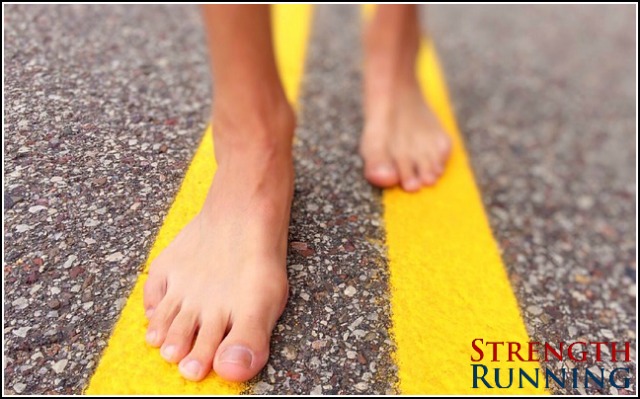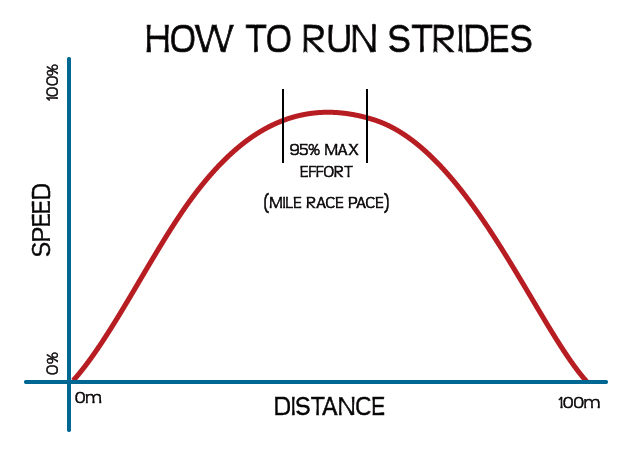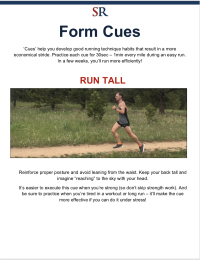Barefoot running is an effective, safe, and fun training tool to help you improve. Unfortunately, it’s often widely misunderstood and improperly applied to the training of endurance runners!
Ever since Christopher McDougall’s epic book Born to Run changed how a lot of runners think about form, ultramarathons, and shoes, there’s been a powerful barefoot movement in the running community.
You might remember the countless articles fawning over the idea of running sans shoes…
Some people even go by names like “Barefoot Ted” or “Barefoot Ken Bob.”
And while I love ditching my shoes to frolic barefoot and feel the grass between my toes, it’s not worthy of changing your name:
- Long runs are important – where’s Long Run Ted?
- Strength training is critical – where’s Gym Workout Deborah?
- Consistency is the secret sauce – where’s Consistency Steve?
You can see why you shouldn’t self-identify with a single element of training: it’s just a single element!
And while barefoot running has a place in nearly every runner’s training, it must be used appropriately (just like you shouldn’t power clean with bad form or run 20 miles without building up to that distance).
That’s what you’re going to learn today: how to incorporate barefoot running safely into your training for maximum benefit and the least injury risk possible.
Let’s start with a big question:
Is Barefoot Running Safe?
“I believe that when my runners train barefoot they run faster and suffer fewer injuries.” – former Stanford track coach Vin Lananna
Barefoot running is as safe as a deadlift or a long run: the poison is in the dose, not the activity itself.
You wouldn’t attempt a challenging deadlift workout if you’ve never spent time in the gym. Nor would you run 20 miles without first running close to 20 miles.
Barefoot running is the same: you must start with a small dose, progress gradually, and recognize that more does not mean better.
Running without shoes places more stress on the muscles and connective tissues of the foot, lower leg, and ankle. But it also reduces impact forces on the knee.
Like anything in life, there are important trade-offs to consider when thinking about running barefoot.
There are also certain things that make any amount of barefoot running riskier. If you…
- Wear constrictive shoes all day (dress shoes or heels)
- Don’t spend any time barefoot in your home
- Rarely if ever wear flip-flops or sandals
… then you might consider yourself “high risk” and therefore be even more cautious about running barefoot.
But if your behavior is the opposite of those risk factors, then you’re low risk.
Congrats! Now you can start to incorporate some barefoot running into your program.
Barefoot Running Technique

Fortunately, you don’t need to remember any special technique for running barefoot. It’s almost exactly the same as running in shoes!
In fact, proper running form is actually easier to achieve without shoes because you simply can’t have some aspects of poor form (for example, you can’t aggressively heel-strike barefoot. It’ll hurt too much).
But there are a few differences to keep in mind:
Increase Your Cadence
You’ll probably find it necessary to run with a quicker, shorter stride to reduce impact forces on your lower legs.
A longer, bounding stride is more challenging when you’re barefoot – showing that a higher cadence (or steps per minute) is highly beneficial no matter if you’re shod or barefoot.
Most runners should probably increase their running cadence (especially if it’s less than 160 steps per minute). But if your step rate per minute is 170 or higher, you likely don’t have to worry about this aspect of your running form.
Pace Yourself
If you’re just running at your typical easy pace, you’ll probably need to slow down. Run by effort and feel rather than strictly relying on pace.
After all, you’re not running barefoot to boost your aerobic fitness. You’re doing it to improve your efficiency, get stronger, and reduce your injury risk.
Pace isn’t that important!
Get Stronger Feet First
Building stronger feet through proprioceptive drills, foot strengthening exercises, and casual barefoot time can be a great first step to running barefoot.
Episode 322 of the Strength Running Podcast highlights the importance of developing proper foot strength:
Our guest, strength coach Keith Mueller, provides a master class on foot strength, exercises and drills, and barefoot running.
The Bottom Line: Is Barefoot Running “Better?”
No – because “better” is meaningless. Whenever someone asks me this, I usually have more questions than answers:
- In what way?
- For whom?
- In all circumstances?
A more productive way to think about barefoot running is that it’s a training tool (just like a track workout).
Is a track workout “better” than a long run? No, because they’re just different. They’re different tools for different jobs.
Just like you wouldn’t attempt a long run or track workout every day, you don’t want to run barefoot every day. The injury risk is too high and you’ll miss out on many important benefits of running with shoes.
But as with any tool – barefoot running can be used appropriately and strategically to further your running goals.
3 Ways to Add Barefoot Running to Your Training
As a coach, I’m always looking for high-impact, low-risk ways to foster improvement.
Running 10 miles barefoot is not a low-risk way to implement barefoot running into your training.
Instead, I prefer small doses that have virtually no injury risk.
Step 1: Barefoot Strides
Strides are accelerations of about 100 meters in length. Graph the effort and it looks like this:

It’s ideal to build up to 4-6 strides, 2-3 times per week after easy runs. And you can do some of those strides barefoot!
By running at a faster pace barefoot, you’re using more of the foot musculature and with higher loads. The effect is stronger foot and lower leg muscles – just what we’re looking for out of barefoot running.
You’re also more effectively reinforcing proper running form. Not only is poor form more difficult when you’re barefoot, but also when you’re running faster.
Two sets of 4 barefoot strides per week would be sufficient for all of the benefits.
Step 2: Easy Running
Rather than do a lot of volume barefoot, adding just a few minutes of it at the end of your run can dramatically reduce the injury risk but still give you a lot of the advantages. The key is to ensure you’re running at an easy pace (ideally, based on effort).
Start with about a minute of running without shoes. Notice how it makes you feel over the following few days. Then in about a week, you can start gradually building up to about 5 minutes of barefoot running.
Don’t believe that “more is better.” Barefoot running is like Elmer’s Glue – a dab will do ya.
Step 3: Barefoot Drills
I’ve long had a soft spot for barefoot form drills in lush grass or on a synthetic turf field. My toes are perking up just thinking about it!
Beyond just feeling good, barefoot drills can help you better reinforce efficient mechanics.
For example, if you’re practicing a skipping drill that prioritizes landing on the midfoot then that’s going to be easier if you’re not wearing bulky trainers.
After a few months of diligence, you can incorporate 2-3 barefoot sessions per week (one of each would be great in this coach’s mind!).
Advanced Barefoot Running
There are just as many ways to incorporate barefoot running into your training as there are workouts you might run.
But one of my favorites is a simple circuit that combines strides with easy running. It takes no more time than 4 traditional strides, but you complete slightly more barefoot work.
I recorded a short video to walk you through the Barefoot Stride Circuit:
Here’s how to execute this circuit:
- After taking off your shoes, run one barefoot stride
- Take a few deep breaths for 10-20 seconds
- Jog slowly to the opposite corner of the infield (field or yard works too!)
- Take a few more deep breaths (remember: this is not an aerobic session. Catch your breath!)
- Run another stride
- Repeat
Don’t jump right into this session – start with 1-2 strides, add some easy running and drills over 4-6 weeks, and then you’ll be ready.
And when in doubt, just run less barefoot. More is not better!
Use Form Cues to Improve Your Form
Remember that there is no such thing as the best running cadence. It varies based on speed and is slightly different based on each individual runners’ mechanics, height, strength, and mobility.
But there are appropriate ranges:
- 160+ if your easy pace is slower than 10-minutes per mile
- 170+ if your easy pace is faster than 10-minutes per mile
This simple framework will put the vast majority of runners into their own personal, ideal running cadence range.
A good running cadence happens first and foremost through effective training. Perhaps the most effective way to improve your form and every metric associated with it is to…
- Run fast regularly
- Get strong
- Run a lot
You can also use form cues to make this process easier. Form cues are simple tasks that you perform while running that reinforce proper technique.
A good example is the “run tall” cue. For those who slouch or don’t have a tall, athletic posture while running, this cue reminds athletes to look forward, stay upright, and avoid hunching their shoulders.
Our Form Cues Guide has three of my favorite cues to help reinforce economical technique.
The cheat sheet includes:
- Instructions for how to execute each cue

- When (and for how long) to do each cue while you’re running
- Tips to make each cue easier to execute (hint: strength matters!)
- Photos of me in split-leg short shorts racing with sunglasses (you’re welcome)
Get it here and hang it wherever you warm up for your runs – you’ll have new ideas to work on during every easy run!
Powerful running technique is built through training and conscious decisions to run more efficiently.
Start thinking more strategically about running with a higher running cadence and more efficient form, and you’ll soon be healthier and faster than ever before.